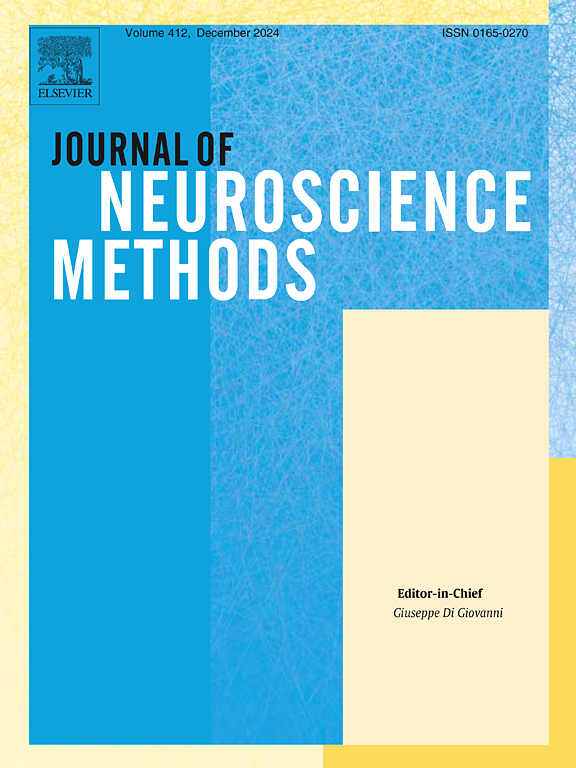Ramp protocol for non-linear cerebrovascular reactivity with transcranial doppler ultrasound
IF 2.7
4区 医学
Q2 BIOCHEMICAL RESEARCH METHODS
引用次数: 0
Abstract
Background
Cerebrovascular reactivity (CVR) reflects the ability of cerebral blood vessels to adjust their diameter in response to vasoactive stimuli, which is crucial for maintaining brain health. Traditional CVR assessments commonly use a two-point measurement, assuming a linear relationship between cerebral blood flow (CBF) and arterial CO2. However, this approach fails to capture non-linear characteristics, particularly the plateaus at extreme CO2 levels.
New method
This study introduces a cost-effective, ramp-based end-tidal CO2 (PETCO2) protocol to assess non-linear aspects of CVR. Using transcranial Doppler ultrasound, we monitored blood velocity responses to progressive increases in arterial CO2 levels in eleven healthy adults, covering a spectrum from hypocapnia to hypercapnia.
Results
All eleven participants successfully completed the protocol, with an average PETCO2 range of 26 ± 4 mmHg and blood velocity changes from −29 % to + 50 % relative to baseline. Non-linear CVR characteristics were observed in all subjects. Sigmoid models provided significantly better fits to the CVR data than linear models, while Bayesian approaches followed expected physiological ranges more accurately than least squares regression methods.
Comparison with existing methods
Unlike traditional CVR methods, this ramp protocol captures the full, non-linear CVR profile. The sigmoid modeling approach offers a more accurate representation of cerebrovascular dynamics, particularly at CO2 extremes.
Conclusions
The PETCO2 ramp protocol with non-linear CVR modeling shows promise as an accessible and reliable tool for assessing CBF dynamics. With high completion rates, straightforward implementation, and low equipment cost, this approach holds significant potential for clinical applications in cerebrovascular health evaluation.
经颅多普勒超声非线性脑血管反应的斜坡方案。
背景:脑血管反应性(CVR)反映了脑血管在血管活性刺激下调节其直径的能力,这对维持大脑健康至关重要。传统的CVR评估通常使用两点测量,假设脑血流量(CBF)和动脉二氧化碳之间存在线性关系。然而,这种方法未能捕捉到非线性特征,特别是在极端二氧化碳水平下的平稳期。新方法:本研究引入了一种具有成本效益的、基于坡道的末潮CO2 (PETCO2)方案来评估CVR的非线性方面。使用经颅多普勒超声,我们监测了11名健康成人动脉二氧化碳水平逐渐增加时的血流速度反应,涵盖了从低碳酸血症到高碳酸血症的频谱。结果:所有11名参与者都成功完成了治疗方案,平均PETCO2范围为26±4mmHg,相对于基线,血流速度变化从-29%到+50%。所有受试者均观察到非线性CVR特征。s型模型比线性模型更适合CVR数据,而贝叶斯方法比最小二乘回归方法更准确地遵循预期的生理范围。与现有方法的比较:与传统的CVR方法不同,该斜坡协议捕获了完整的非线性CVR剖面。s形模型方法提供了更准确的脑血管动力学表示,特别是在二氧化碳极端情况下。结论:具有非线性CVR模型的PETCO2斜坡方案有望成为评估CBF动力学的可访问且可靠的工具。该方法完成率高,实施简单,设备成本低,在脑血管健康评估中具有重要的临床应用潜力。
本文章由计算机程序翻译,如有差异,请以英文原文为准。
求助全文
约1分钟内获得全文
求助全文
来源期刊

Journal of Neuroscience Methods
医学-神经科学
CiteScore
7.10
自引率
3.30%
发文量
226
审稿时长
52 days
期刊介绍:
The Journal of Neuroscience Methods publishes papers that describe new methods that are specifically for neuroscience research conducted in invertebrates, vertebrates or in man. Major methodological improvements or important refinements of established neuroscience methods are also considered for publication. The Journal''s Scope includes all aspects of contemporary neuroscience research, including anatomical, behavioural, biochemical, cellular, computational, molecular, invasive and non-invasive imaging, optogenetic, and physiological research investigations.
 求助内容:
求助内容: 应助结果提醒方式:
应助结果提醒方式:


